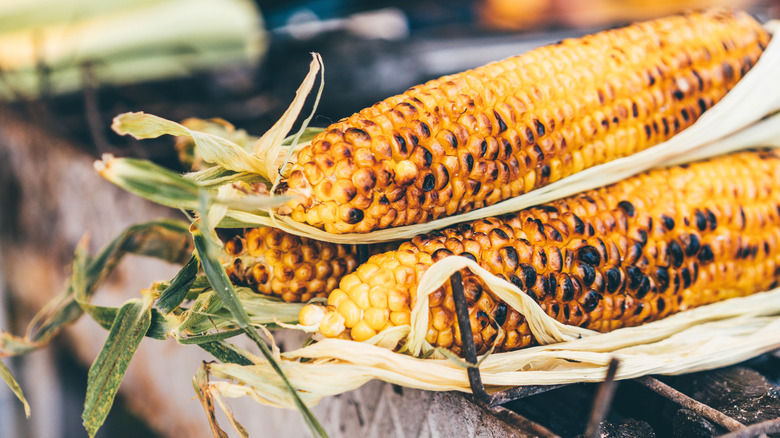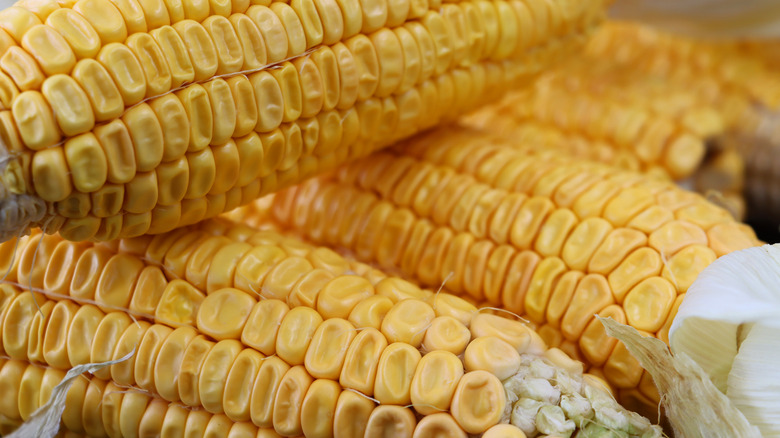Yes, There Is A Difference Between Sweet And Field Corn
It's common to hear the term "sweet corn," referring to those luscious, crunchy, cobbed kernels we love to slather with butter, salt, seasonings, lime spritzes, or elote-style dips and sauces. Whether you're a corn purist eschewing the extras, or an all-out anything-goes cob enthusiast, it's a good bet you're eating sweet corn rather than its alter ego, field corn. Also known as dent corn or cow corn, this is the type fed to cattle or other livestock — and there's definitely a difference.
It mostly comes down to sweetness and texture, which is purposefully cultivated depending on the corn's destination: to humans, animals, or an extraordinarily broad range of consumer products. The sweet corn cultivated for human palates has a much higher natural sugar content, and the ears get harvested early, before that sugar transforms into starch. The kernels remain juicy beneath the skins, gifting us that sweet burst of flavor. But this kind accounts for only a small portion of corn grown in America.
U.S. farmers plant at least 90 million acres of corn annually. The bulk of it becomes field corn that gets used as animal feed, cooking oil, food fillers, and fuel ethanol. You'd immediately recognize the difference if you bit into it. The corn features prominent impressions, or dent marks, in each kernel, a result of drying in the fields much longer than sweet corn. This results in starchy kernels rather than sweet, juicy ones.
Field corn and the ultimate all-American spirit
As distasteful as fresh field corn may appear to humans, some very common products come from it. Think corn meal, masa, corn chips, tortillas, grits, and cereals, all created from field corn that's been fully dried and powdered. Countless other foods employ it in the form of corn oils or high fructose corn syrups. Then there's the delightful incorporation of corn into a favorite all-American spirit: bourbon.
Per the guidelines of bourbon production, corn must be used as the dominant grain component, no exceptions. If the beverage doesn't contain at least 51% corn in its mash bill, the name doesn't go on the label. The dry, hard texture of field corn is essential for milling and powdering the vegetable to the proper consistency for making bourbon, while also unleashing natural sugars left lurking inside the kernels. Corn imparts the touch of sweetness defining bourbon at its very core, along with light, mellow flavors of caramel and vanilla.
Americans collectively consume the largest amount of corn in the world. That includes those of us who can't get enough of a third type of corn, the ever crave-able, beloved popcorn. It's separate from both sweet corn and field corn, falling into a category known as flint corn. This is when the kernels themselves are dried until fully hardened, often remaining on the cob for autumn and holiday decorations. But for popcorn, a small amount of moisture inside the hulls explodes under heat and fills our bowls with buttery movie-time goodness.

